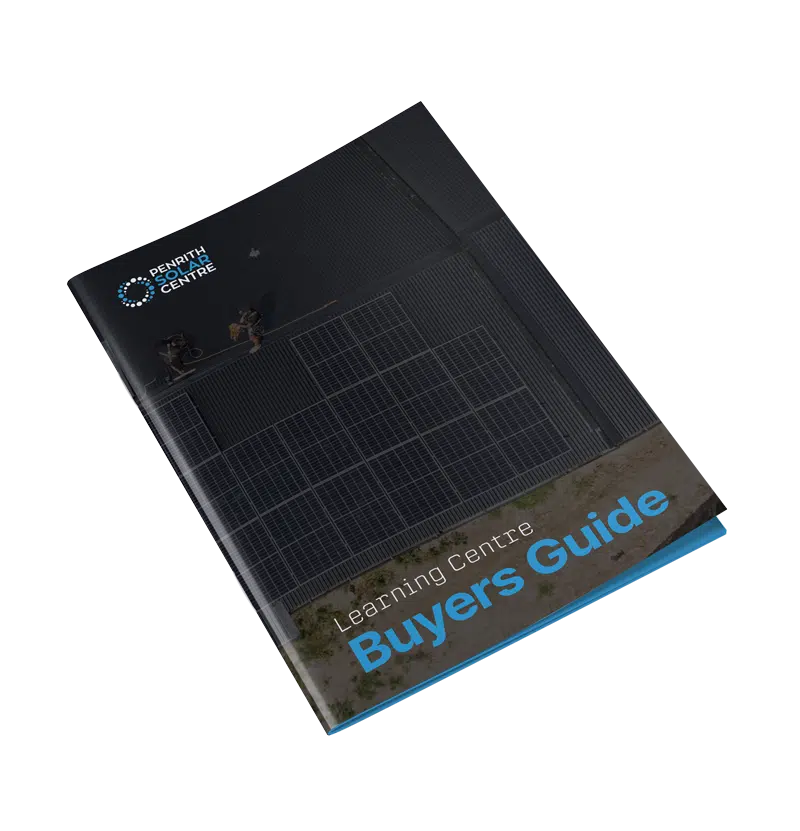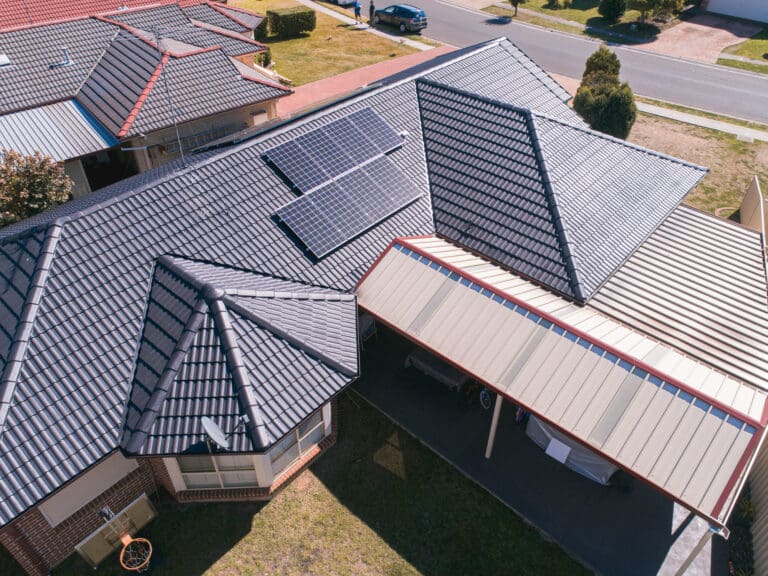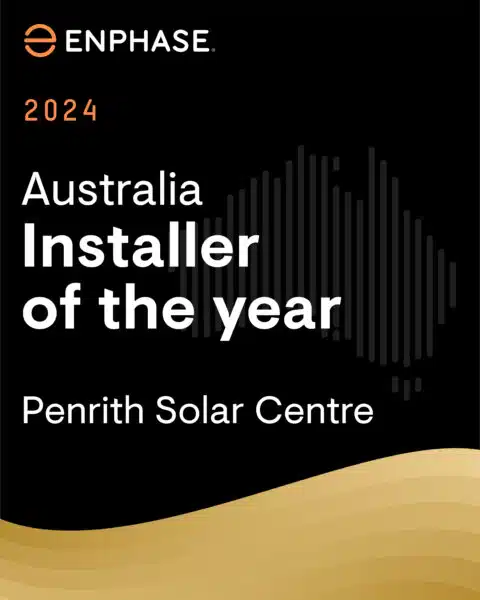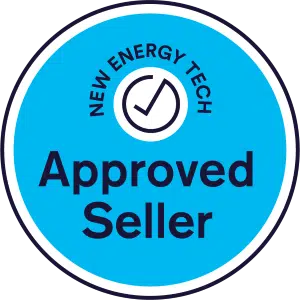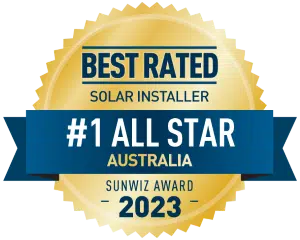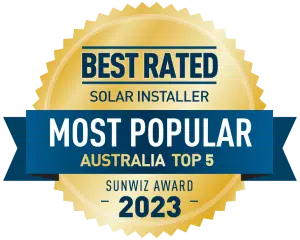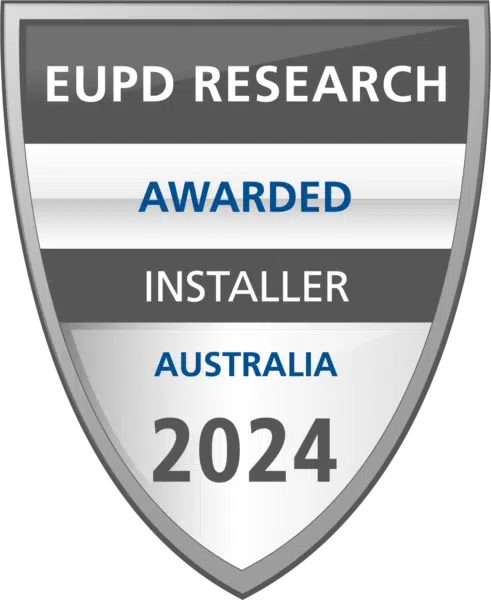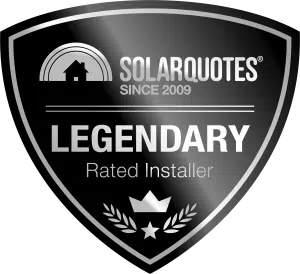
Solar power offers a way to lower energy bills and invest in green, clean energy. Most folks can see the advantages of solar panels, but there’s so much more to the system than the panels.
A solar system has several components. Each has an important job and they work together to harness sunshine and transform it into energy for your home to use.
In this article, you’ll learn about the following:
- How Do Solar Panels Work?
- How Does a Solar Panel Inverter (or Microinverter) Work?
- How Does a Solar Mounting System Work?
- What Does a Solar Battery Do?
- What is a Consumption Monitoring System?
By the end of this article, you’ll understand every part of a solar system so you can make better decisions about your investment.
How Do Solar Panels Work?
Solar panels are the most visible part of a solar power system. They’re the main star of a solar system for this reason. People know about solar panels when they might not know anything about other components.
How Solar Panels Work:
Solar panels are made up of many small cells that capture sunlight. These cells use special silicon to generate electricity when exposed to sunlight. The electrons within get agitated.
The electricity the agitated electrons produce is called direct current (DC). This means the energy flows in only one direction.
Types of Solar Panels:
- Monocrystalline Panels: The cells in these panels are made by cutting a single bar of silicon into wafers. This makes them more efficient at converting sunlight into electricity. They perform better in low-light conditions and take up less space on your roof compared to polycrystalline panels.
- Polycrystalline Panels: The cells in these panels are made by melting multiple fragments of silicon together to form the wafers. They are slightly less efficient than monocrystalline panels but are more affordable, making them a good option for larger roof spaces or budget-conscious homeowners.
Lifespan:
Solar panels are designed to last for 25 years or longer. They often come with a performance warranty of 30 years. This makes sure that after 30 years, your panels will still perform at a certain efficiency (just under 90%).
Solar panels can withstand extreme weather, including hail, rain, and high temperatures, which makes them ideal for Australian conditions.
If you’re interested in learning a bit more about solar panel maintenance, you might want to check out the following article titled, How to Clean Solar Panels.
How Does a Solar Power Inverter (or Microinverter) Work?
The inverter (or microinverter) is an important part of your solar system. It works like a translator: your panels speak one language and your home speaks another. The inverter transforms the electricity from the panels into usable electricity for the home.
What Inverters Do:
- As we mentioned, solar panels only produce DC electricity. Your home runs on alternating current (AC) electricity.
- The inverter transforms the electricity by adjusting the waveform of the electrical current. It’s pretty nifty.
- Your home and appliances are powered with AC electricity thanks to the inverter.
Types of Inverters:
Even though they all do the same thing, there are different types of inverters.
String Inverters: These inverters are usually installed on the side of the house. They adjust the power before sending it to the main switchboard.
The disadvantage of string inverters is that they work like Christmas lights: when one solar panel stops producing at 100%, the others all drop to match it. When a panel underperforms due to shade or an obstruction like dirt or bird droppings, the other panels drop to match that performance. They’re not as efficient as the competition.
Microinverters: Microinverters are spread out across the entire solar array. Instead of being installed on the side of the house, each solar panel has a microinverter mounted underneath it. They convert electricity at the panel level.
They optimise performance for solar arrays where shading is an issue. They’re also helpful to have if your roof faces different directions.
This is because they are decentralised across the entire solar system. Unlike string inverters, when one microinverter stops working, it’s only the troublesome panel and microinverter that stop producing power.
Hybrid Inverters: These inverters are necessary if you’re installing some solar batteries. Because batteries only store energy in DC form, the power from the solar system is converted to AC for the home and then back to DC for storage in the battery.
A hybrid inverter is not always required for a home battery system. It’s only necessary for a string inverter system when adding a battery to the system. Adding a battery to a microinverter system does not require a hybrid inverter.
Lifespan:
It varies from inverter to inverter. Most string inverters have a warranted lifespan of 5 – 10 years. Enphase microinverters, on the other hand, have an unparalleled 25-year warranty. They’re guaranteed for as long as your panels.
If you’re interested in learning a bit more about how microinverters compare to string inverters, you might want to check out the following article titled, Microinverters vs. String Inverters: A Transparent Comparison.
Ready to go solar? Click here.
How Does a Solar Mounting System Work?
The mounting system is comprised of the rails, bolts, and metal feet that hold your solar panels in place and connected securely to the roof. They’re usually aluminium or stainless steel, lightweight but durable materials.
Types of Mounting Systems:
Fixed Roof-mounted: This is the most common type of solar mounting system. The parts and pieces attach your solar panels to your roof. Most often, they’re installed flush against the pitch of the roof.
Fixed Ground-mounted: Much like fixed installations on the roof, fixed ground-mounted solar panels are also installed permanently in place. They’re just on the ground. These types of installations are great if you have a small or unusual roof. You’ll need the land to make room for it though.
Adjustable Tilts: Tilts are intended to point a system towards the sun. They’re necessary for flat roofs, but we advise against them for a pitched roof. Solar panels need to be installed at an angle to remain self-cleaning and free from water collecting on them, which is why they’re necessary for flat roofs. Adjustable tilts are fixed once installed, but they can be adjusted at different angles.
Tracking Systems: There are also various tracking systems where the panels look like satellite dishes. These systems are ground-mounted and programmed to follow the sun as it makes its way across the sky.
They require a bit more maintenance than the above setups and are often so expensive that they extend your solar payback period to an absurd length. We feel that solar doesn’t need to be that expensive to be useful.
Lifespan:
As we mentioned, most mounting systems (the fixed ones, anyway) are made out of aluminium or stainless steel. Some systems have a special coating that extends their lifespan and protects them from the elements. This is particularly important in coastal regions where exposed metals corrode quickly. Most mounting systems are usually guaranteed for 25 years or longer.
If you’re interested in learning a bit more about solar mounting systems, you might want to check out the following article titled, What is a Solar Mounting System?
What Does a Solar Battery Do?
A solar battery is not necessary when shopping for a solar system. They are awfully handy though. They can store energy for you during the day that your solar produces. Then they discharge that stored energy for use at night when it’s dark and electricity is expensive.
Types of Solar Batteries:
Most solar batteries are lithium-ion or lithium iron phosphate. There are occasional new kids on the block, like flow batteries, but they’re not widely distributed. There are also lead-acid batteries, but they’ve seen their day and are generally replaced by lithium options.
Why Invest in a Solar Battery:
We started this section off by saying that solar batteries are optional for now. We believe this to be the case, as evidenced by the Powerwall 3. It’s a complete solar and battery system, and we believe that the solar market is moving towards this.
There’s a battery rebate to assist buyers in New South Wales. The government is encouraging the adoption of batteries because they relieve the electrical grid and prevent blackouts in communities.
Speaking of blackouts, solar batteries are protection against losing power in the heat or in a storm. The changeover from grid electricity to battery storage is seamless when the lights go dark. Most customers won’t notice the changeover. This aspect of solar batteries is particularly appealing if you have medical equipment that needs to remain powered.
Lifespan:
The warranted lifespan for solar batteries is around 10 years. Some batteries will guarantee a certain amount of complete charge and discharge cycles instead. The reality is that solar batteries naturally degrade.
Lithium-based batteries have a certain chemical combination that leads to the battery losing charge over time. This is completely normal, just like rechargeable household devices that do the same – like the battery in your cell phone.
With a Tesla Powerwall 3, you can count on around 70% of a battery’s storage capacity after 10 years. Enphase’s IQ Batteries are warranted for 15 years at 60% capacity. There is a range here that will be different for every home and every battery. It depends on how you use electricity.
If you’re interested in learning a bit more about the solar battery rebate, you might want to check out the following article titled, Everything You Need to Know About the Home Battery Rebate for NSW.
Start saving with solar today.
What is a Consumption Monitoring System?
Consumption monitoring is a big phrase that means something very simple. It’s a combination of hardware and software that tracks how energy is used in your home.
When you install a mini power plant on your roof, you want to keep track of how much energy you’re getting from it, how much you’re storing, and how much you’re exporting to the grid. You wouldn’t buy a car without a speedometer, would you?
You can take this real-time data and apply it to save money.
Types of Consumption Monitoring Systems:
Solar Monitoring Systems: The type of solar monitoring system you get will depend on the type of solar system you have installed. If it’s a string inverter system, where the inverter is on the side of the house, the monitoring system will be limited. String inverters can’t track energy production panel-by-panel.
Microinverter systems offer panel-level monitoring. This empowers the owner to track energy production from panel to panel, making repairs easy to identify.
Not every solar system comes with consumption monitoring. In the case that your solar system doesn’t include this feature, consider investing in a third-party app that does the same, like Solar Analytics.
Battery Monitoring Systems: Every solar battery has some form of consumption monitoring. They would be completely useless without a way to input directions. A solar battery needs instructions about when to charge and discharge.
They do this through a consumption monitoring app. Tesla has a brilliant one that’s especially wonderful if you’ve invested in the Tesla ecosystem.
Lifespan:
The lifespan of consumption monitoring software is the same as your system’s. A good thing to mention here is how the app will routinely update itself to make your solar system integrated with new and compelling features. Developers are constantly improving these types of software.
If you’re interested in learning a bit more about the importance of monitoring and programming your energy, you might want to check out the following article titled, What is Consumption Monitoring?
Click here for sunshine and savings.
Connecting the Watts with Solar
A solar system is so much more than just the panels. There’s an inverter, a mounting system, an optional battery, and of course the consumption monitoring software. Each component plays a part in keeping your system running at optimal capacity.
At Penrith Solar Centre, we understand how these components work together to keep your system efficient. With the right technology, you’ll be able to produce, store, and consume your homegrown electrons.
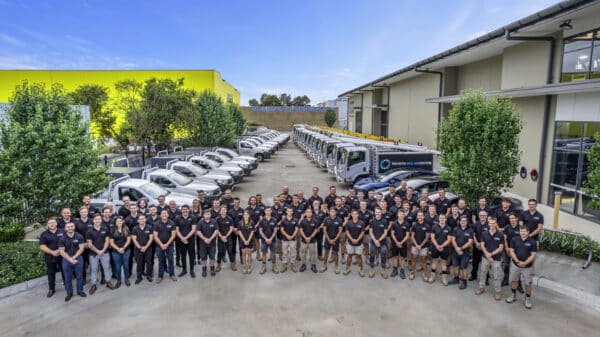
If you’re interested in learning a bit more about the process of choosing components for your solar system, you might want to check out the following article titled, How to Shop for a Solar System.
